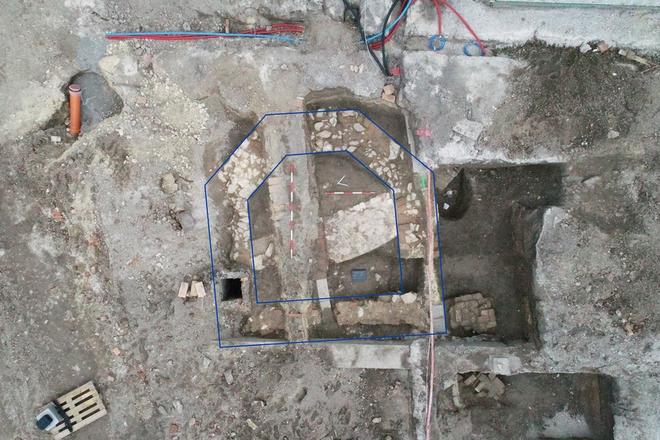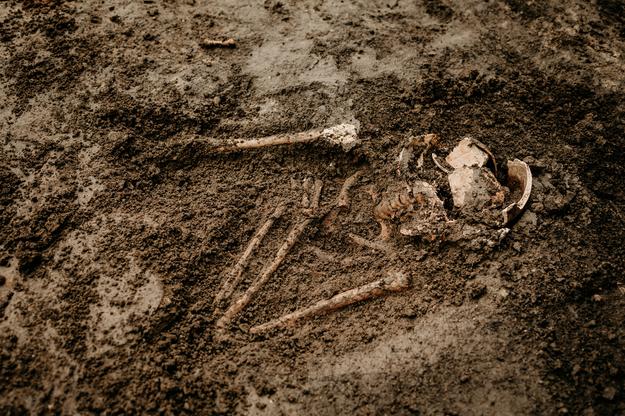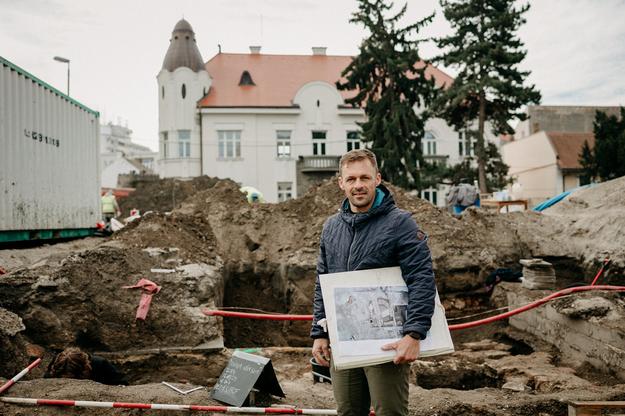Archaeologists from Trnava University have discovered the foundations of a defunct mediaeval church in downtown Trnava.
Experts have said that the building is unique for its shape, the stone from which it was built, as well as its location. The church stands right outside the city walls. “In the Middle Ages, it was a very dangerous, unprotected place,” said archaeologist Erik Hrnčiarik. Only in very exceptional cases did people build any kind of architecture outside the walls.
In the last century the place where the church has been unearthed, SNP Square, was damaged by construction activity. Hence, nobody had high hopes of precious discoveries.
“This is a small miracle,” the expert noted.
Funeral church
The polygonal Gothic church is built from brick and quarried stone, a combination often used for townhouses back in the day. Its walls are 96 cm wide.
The building was devoted to St. Ulrich. He was a Benedictine monk and later a bishop in Augsburg, Germany.
“Its construction must be related to the presence of the Benedictine order in the town,” said historian Vladimír Rábik. The order lived in a monastery near St. Helena Church with its own hospital in the 13th century. “St. Ulrich Church can therefore be interpreted as a funeral church for deceased patients of the hospital,” said the historian. Near St. Helena Church, there was not enough space for funerals.
In the vicinity of the church, the archaeologists identified the remains of a defunct mediaeval cemetery. The cemetery along with the church disappeared at the end of the Middle Ages. A few centuries later, a barbican was built on this site to strengthen Trnava’s defence capabilities.
Renaissance parking space
The archaeologists also managed to identify a unique find in Slovakia: a Renaissance parking space. This was an area paved with small pebbles, more than three metres wide, located to the north of the road leading to the Lower Gate. The area was probably used to park carriages during night hours. The people of Trnava would close the Lower Gate at a certain hour. After that it was no longer possible to enter the town.
“So far, we have not come across a similar find in Slovakia or the Czech Republic,” said Hrnčiarik, adding that the ruts from the wagon wheels have been preserved on its surface.


 The recently discovered St. Ulrich Church in Trnava. (source: TRUNI)
The recently discovered St. Ulrich Church in Trnava. (source: TRUNI)
 A skeleton uncovered in an old cemetery in Trnava. (source: TRUNI)
A skeleton uncovered in an old cemetery in Trnava. (source: TRUNI)
 Erik Hrnčiarik. (source: TRUNI)
Erik Hrnčiarik. (source: TRUNI)